 |
Albacore X9152 - Carr House Green Common, near Inskip 22nd October 1943 |
 |
Albacore X9152 - Carr House Green Common, near Inskip 22nd October 1943 |
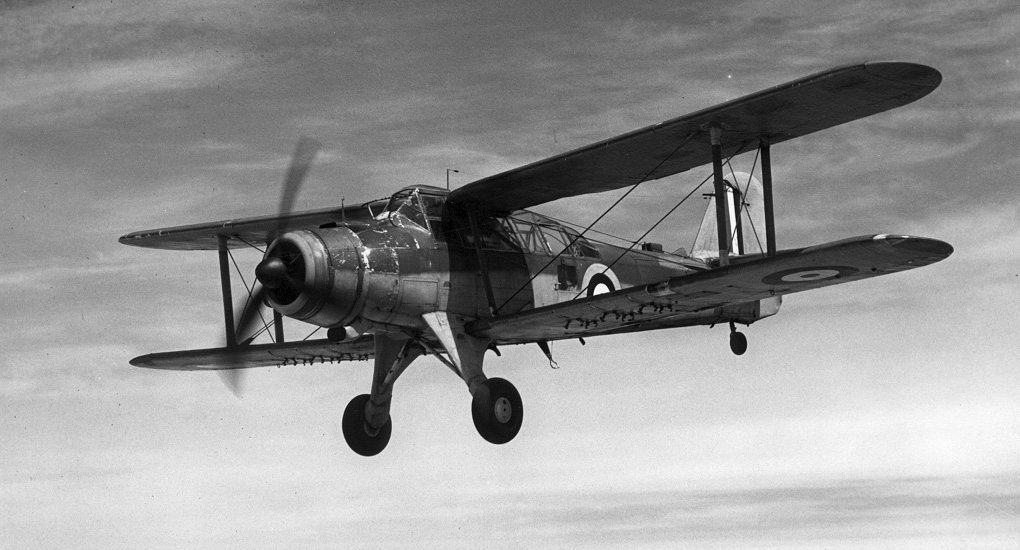 |
| Fairey Albacore I |
| Type | Serial | Unit | Base | Duty | Crew |
| Albacore I | X9152 | No. 766 Naval Air Squadron | RNAS Inskip | Night practice flight | 3 |
The aircraft involved in this incident was a Fairey Albacore I, a three-man crew torpedo/bomber/reconnaissance aircraft built between 1939 and 1943 and originally intended as a replacement for the Fleet Air Arm's ageing Swordfish. X9152 had been delivered on 15th December 1941 and originally allocated to No. 818 Naval Air Squadron before going on to the Wireless and Electrical Flight at the Royal Aircraft Establishment (Farnborough) to test generator cooling in July 1942. It was allocated to No 766 Naval Air Squadron whilst still at RNAS Machrihanish (HMS Landrail) in November 1942. No. 766 Naval Air Squadron had formed at RNAS Machrihanish, near Campletown in the west of Scotland on 15th April 1942 as a night torpedo attack school equipped with Swordfish aircraft. On 7th July 1943 the Squadron moved to RNAS Inskip (HMS Nightjar) to become part of No.1 Naval Operational Training Unit, equipped with 31 Swordfish and a variety of other aircraft, including; Albacores, Fulmars, Ansons and Defiants.
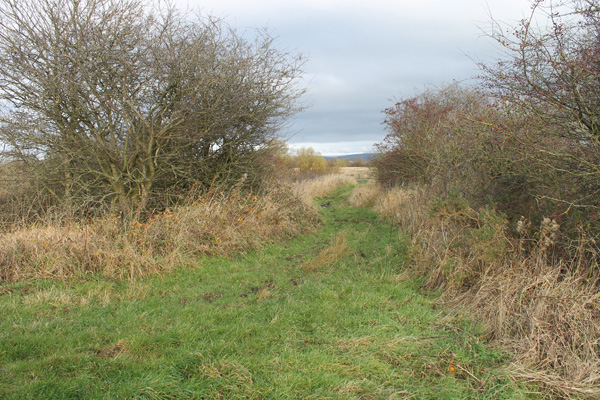 |
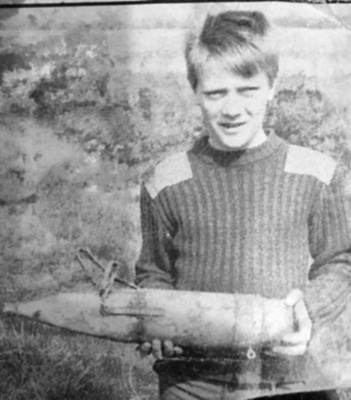 |
Footpath on
Carr House Green Common - in the 1980s a local ATC unit investigated
the crash site, finding very little, other than a possibly live flame float in this location! |
ATC cadet poses with the flame float circa 1984 (Flypast Magazine) |
| Name | Age | Position | Fate |
| Sub Lieutenant (A) William (Billy) Thirlaway | 21 | Pilot | K. |
| Sub Lieutenant (A) Peter Draper | 19 | Observer |
K. |
| Leading Airman Roy Hardy Freeman | 19 | Air Gunner | D.o.I. |
Alabacore X9152 crashed approx. 1,200 yards east of the airfield, whilst executing a low level turn' just after take-off for a night training flight from RNAS Inskip. Witnesses on the ground at nearby Pointer House Farm heard a distinct thud and the house lights flickered, as the aircraft came down on Carr House Green Common with one wing initially striking an overhead electricity supply line pole. The aircraft came down on the eastern side of the common and slid along the ground, bursting into flames and crossing over a large earthwork ditch that bisects the common, which had been enlarged as a wartime tank trap defence. Locals immediately alerted the fire service, though unknown to them, a fire tender and ambulance from the airfield was already on its way, as the crash and ensuing fire was clearly seen by personnel on the airfield. First to arrive were two local police officers; Sgt. Joseph Thompson of Lancashire Constabulary and Sectional Commander Edward Porter of the Lancashire Special Constabulary, who had both been on duty at nearby Inskip and having access to a car, had rushed to the scene. When they arrived the aircraft was completely ablaze, with the 240 gallon fuselage fuel tank mounted between the front and rear cockpits having ruptured in the crash. Knowing that the crew were probably trapped inside, they approached the fire and spotted one airman on the ground at the side of the plane with his clothing on fire. By using his greatcoat to protect himself from the flames, Sectional Commander Porter (a WW1 veteran!) was able to get close enough to the burning aircraft to drag the airman far enough away, so that both men could then smother the flaming clothing and carry him to safety, despite the exploding pyrotechnics and blazing fuel all around them. The man they pulled clear was 19 year old Leading Airman Roy Hardy Freeman, who was obviously in a very bad way and was rushed to the airfield sick bay for emergency treatment, in the hope of stabilising his condition enough so that he might survive being transferred to hospital. Sadly the efforts of the station medical staff were in vain and he died of his injuries early the following day, without regaining consciousness. However, no one was able to reach the other two airmen, both of whom could be clearly seen in the flames, one trapped inside aircraft and the other, who had also been thrown out, remained too close to the seat of the fire to approach. It was not until the fire services managed to extinguish the flames, that both men were found to be dead. Later post mortem examinations revealed all the men had suffered severe injuries in the crash and it was likely that the two who rescuers had been unable to reach, had already been killed before the fire took hold. Both policemen were later awarded the bronze medal of The Society for the Protection of Life from Fire.
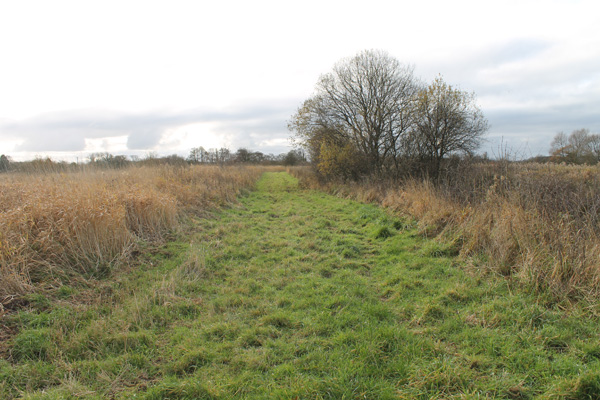 | 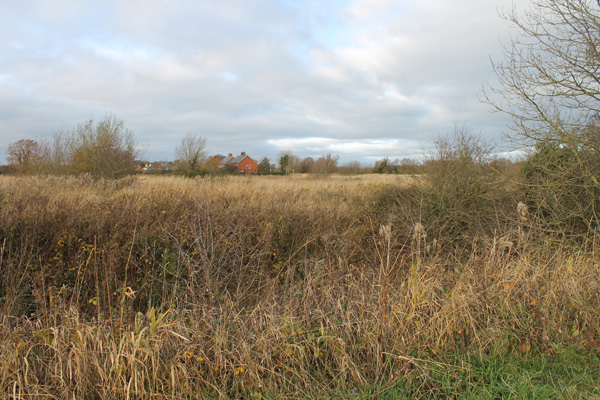 |
| Footpath running alongside the "tank trap" ditch (to the right of the path) on Carr House Green Common - the aircraft slid across this area from left to right. | Looking to the west, across the surprisngly deep earthwork of the reputed "anti-tank" ditch, towards the area where X9152 came to rest near the small trees to the left. |
Our survey of the crash site was initially inspired by one of our member's recollections of visiting the site with a local ATC group in the 1980s - believing that aircraft remains may still be buried on site. This early investigation started in the area of the track that runs alongside the "anti-tank" ditch that bisects the common - This feature was one of a number of natural watercourse obstacles in the area that were utilised or enlarged by the Preston Battalion of the Home Guard, to form part of the early stop-line defences, eventually forming Western Command Stop Line No 15 that ran from Preston to Lancaster. This work was deemed necessary as the large flat sandy beaches of Lancashire had been identified as ideal possible enemy invasion landing sites, so a network of inland obstacles and defensive positions was developed - several examples of which are still present in the area. The cadet's search soon produced a promising signal using one of the basic metal detectors of the time, which proved to be a large cylindrical object which was identified as a possibly still live flame float marker - although on inspection, by a knowledgable adult member of the group, it proved to be empty, it was felt prudent to hand it over to the police - after a few photos had been taken!
Once we had obtained permission to survey the site, our search began in the
same area, which was found to be heavily contaminated with buried rubbish - much
of this was removed and properly disposed off, as well as a significant amount
of surface litter. Our first aircraft find proved to be a sleeve-valve drive
gear wheel from the front of the Bristol Taurus engine and several more small
parts followed before an instrument face from the boost gauge was found.
However, these parts appeared to be in spoil dredged from the bottom of the
"anti-tank" ditch, so did not tell us much about the path the
aircraft had taken. Also the area we believed the aircraft had first hit the
ground to the east of the ditch proved to have been used for extensive rubbish
dumping in the past, so effective grid searching was not possible. Further searching
to the west of the ditch did, however, begin to turn up small parts that
appeared to be in situ, including an area with a few badly burnt aircraft remains.
From this we were at least able to pinpoint where the aircraft had probably come
to rest, though we suspect it was also partially over the ditch. As well as answering
our main query, as to where the aircraft had actually crashed, we also noted
that the post-crash recovery operation must have been very thorough and little
is believed to now remain at the site.
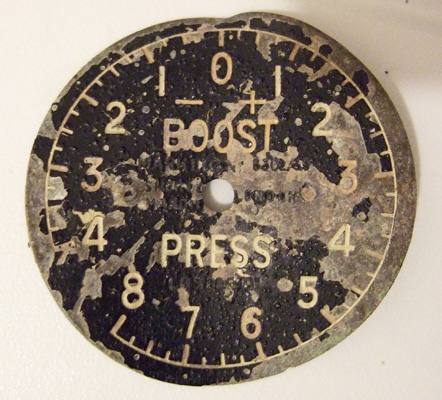 | 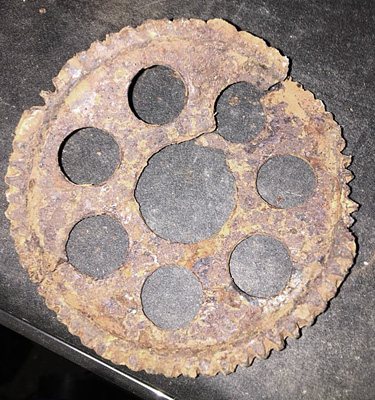 |
| Face from Boost Guage | Engine sleeve-valve gear wheel |
Sub Lieutenant (A) William (Billy) Thirlaway was aged 21 and is commemorated at Blackpool (Carleton) Crematorium, Panel No. 5.
Sub-Lieutenant (A) Peter Draper, was aged 19 and was returned to his home town of Withernsea, Yorkshire, where he is buried in Withernsea (Hull Road) Cemetery Grave No. 314.
Leading Airman Roy Hardy
Freeman was 19 and was returned to his home town of Billingborough,
Lincolnshire, where he is buried at Billingborough (St.
Andrew) Churchyard.
Fleet
Air Arm
aircraft, 1939 to 1945, [by] Ray Sturtivant with Mick Burrow. -
Air-Britain,
1995. - ISBN 0851302327, Inskip Interlude: Memories of a Wartime Naval
Air Station [by] Surgeon
Lieutenant E.V.B. Morton, Russell Brown, Eric Antony Watkiss, Mr
Thompson, Lancashire Daily Post, July 7th 1944. Peter Moran.